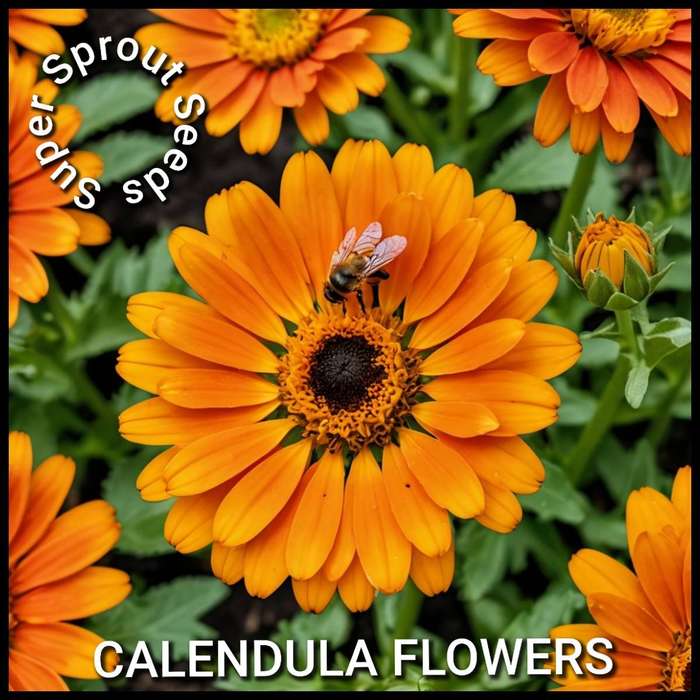
CALENDULA x 15+ seeds
Check my rate
| Main centres: | 1-3 business days |
| Regional areas: | 3-4 business days |
| Remote areas: | 3-5 business days |

| Main centres: | 1-3 business days |
| Regional areas: | 3-4 business days |
| Remote areas: | 3-5 business days |
Calendula, commonly known as pot marigold, is an edible flowering herb known for its bright, daisy-like blossoms and numerous culinary, medicinal, and gardening uses. It is not a true marigold (genus Tagetes), but a different plant within the daisy family, Asteraceae.
General characteristics
Appearance: Calendula blossoms are typically yellow or orange, but cultivars can also have cream, pink, or red hues. The daisy-like flowers close at night and open with the sun.
Native region: The plant is native to the Mediterranean region, but due to its long history of cultivation, it is now found in temperate regions worldwide.
Growing conditions: Calendula grows best in full sun and well-draining, moderately fertile soil. It is a cool-season annual that can be grown from seed and is easy to care for. It blooms prolifically from spring to fall and is known for its ability to re-seed itself.
Symbolism: Because of its bright, cheerful appearance, calendula is said to symbolize joy, gladness, and gratitude.
Culinary uses
Edible petals and leaves: The petals are edible and can add color to salads, soups, stews, and rice dishes. The leaves are also edible but have a bitter taste.
Saffron substitute: Because of its color, dried calendula petals are sometimes used as a less expensive substitute for saffron.
Natural dye: The petals have been used historically to add color to foods like butter and cheese.
Medicinal and cosmetic uses
Skin care: Calendula is frequently used topically in balms, salves, lotions, and tinctures for its anti-inflammatory, antifungal, and antibacterial properties. It has been used to soothe minor cuts, burns, skin irritations, and conditions like eczema.
Oral health: Some studies suggest calendula mouthwash can help treat gingivitis.
Antioxidant properties: Calendula extract contains potent antioxidants, such as flavonoids and carotenoids.
Infusions: Teas and infusions can be made from dried petals for internal or external use.
Gardening uses
Companion plant: Calendula attracts beneficial pollinators like bees and butterflies to the garden.
Pest repellent: Its scent can help deter certain garden pests, such as aphids and whiteflies.
Low maintenance: It is a hardy plant that thrives on neglect and can grow well in containers.
Long bloom period: Deadheading spent flowers encourages continuous blooming throughout the season.